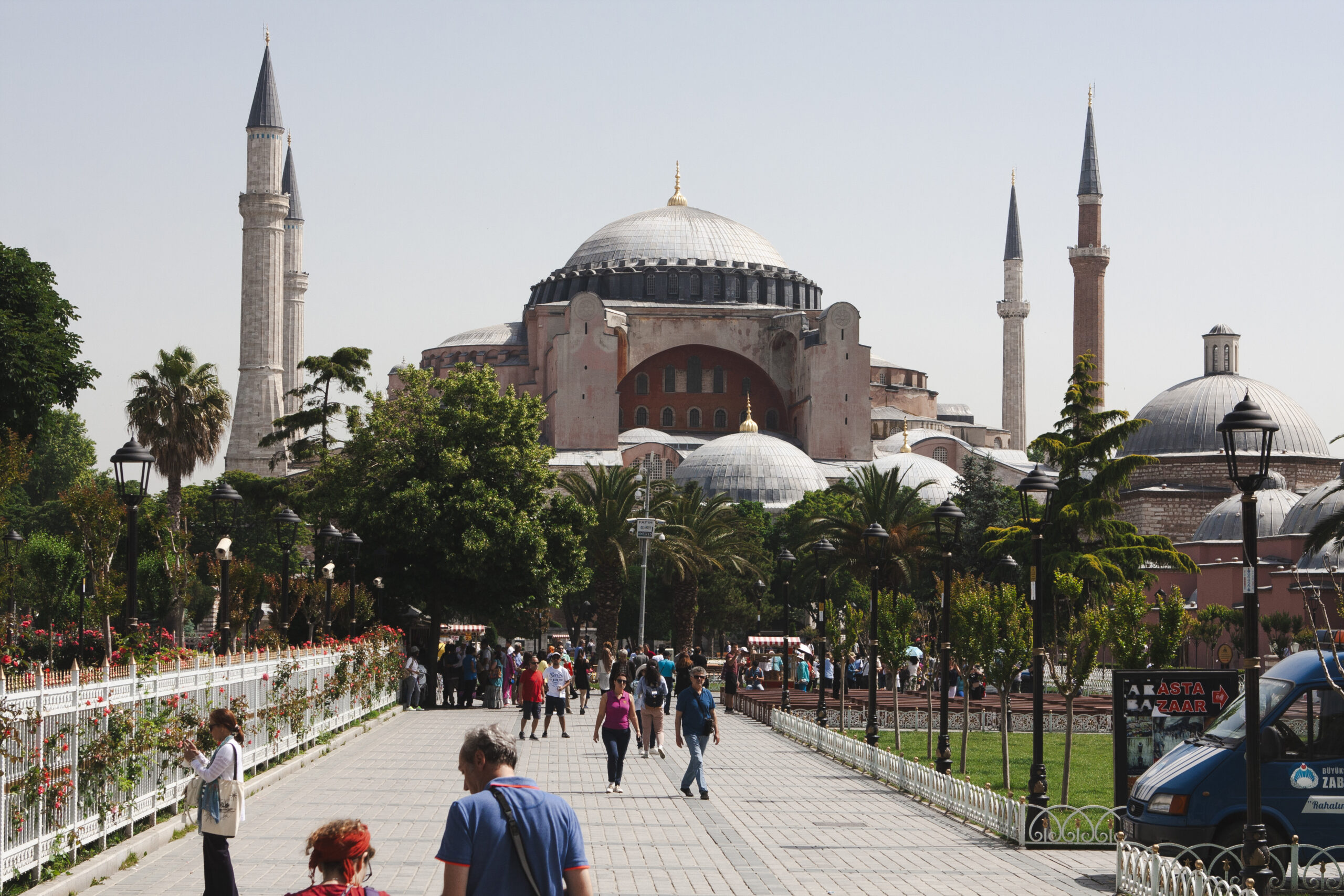I could post some nicely composed images showing the architecture, and the beautifully painted domes, accompanied by my reflections of being in such historic and spiritual places. But why do that when I can show you pictures of the crowds and talk a bit about the history?
The Blue Mosque
The mosque is known as the Blue Mosque because of blue tiles surrounding the walls of the interior. The mosque was built between 1609 and 1616 years, during the rule of Ahmed I.
The mosque is covered with rugs as a general tradition in any mosque, so entering the mosque everyone is required to remove their shoes, as they want to keep the carpets clean. Upon entering the mosque and working our way through the crowds the carpet might be clean, but the air was well permeated with the odor of thousands of feet.

This is the only mosque in Istanbul having 6 minarets or towers. Muslims are called to prayer from the balconies on the minarets five times a day by the Muezzin.
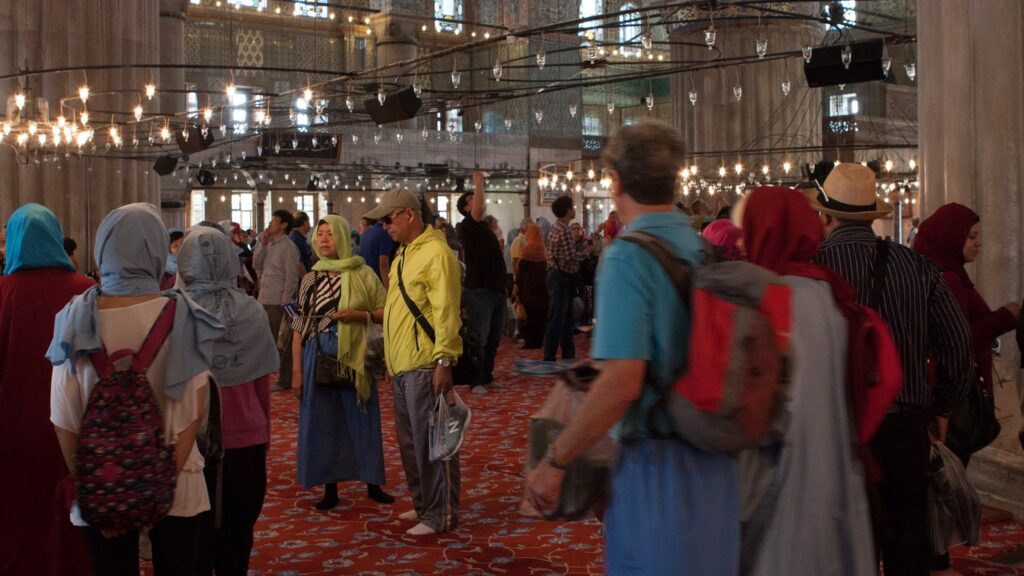
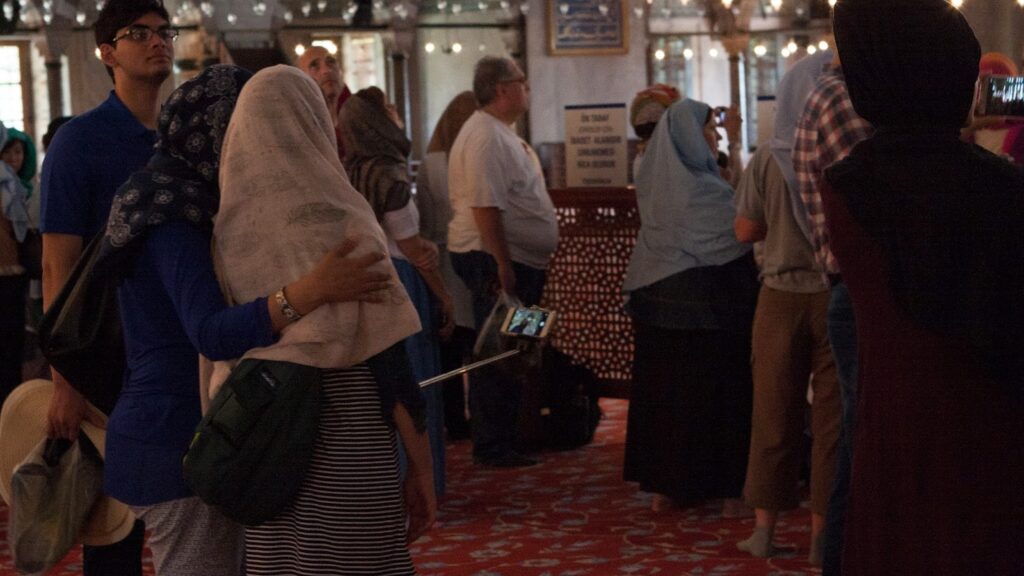
The interior of the mosque is lined with more than 20,000 handmade İznik style ceramic tiles, in more than fifty different tulip designs.
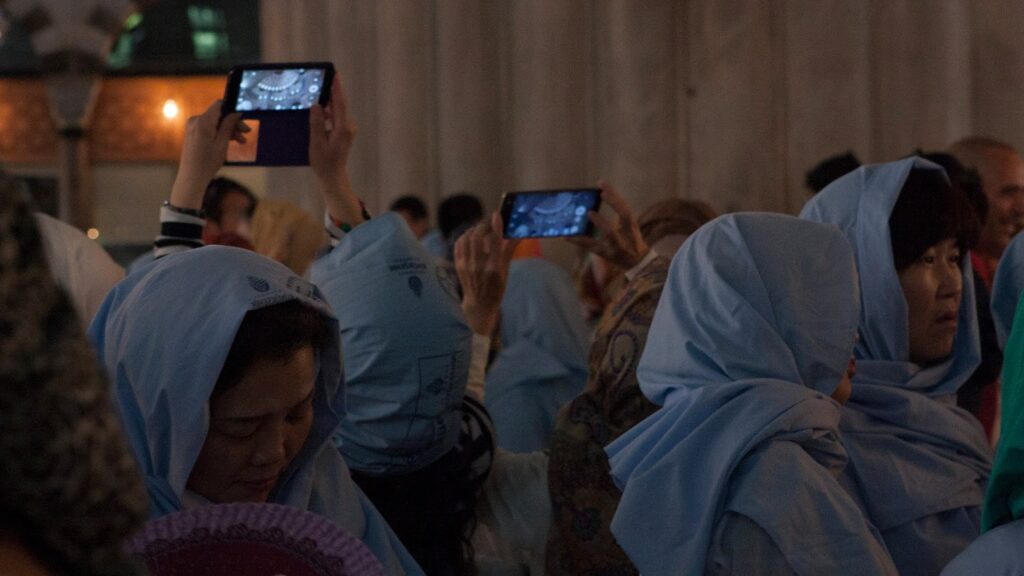
According to Wikipedia, Pope Benedict XVI visited the Sultan Ahmed Mosque on 30 November 2006 during his visit to Turkey. It marks as only the second papal visit in history to a Muslim place of worship.
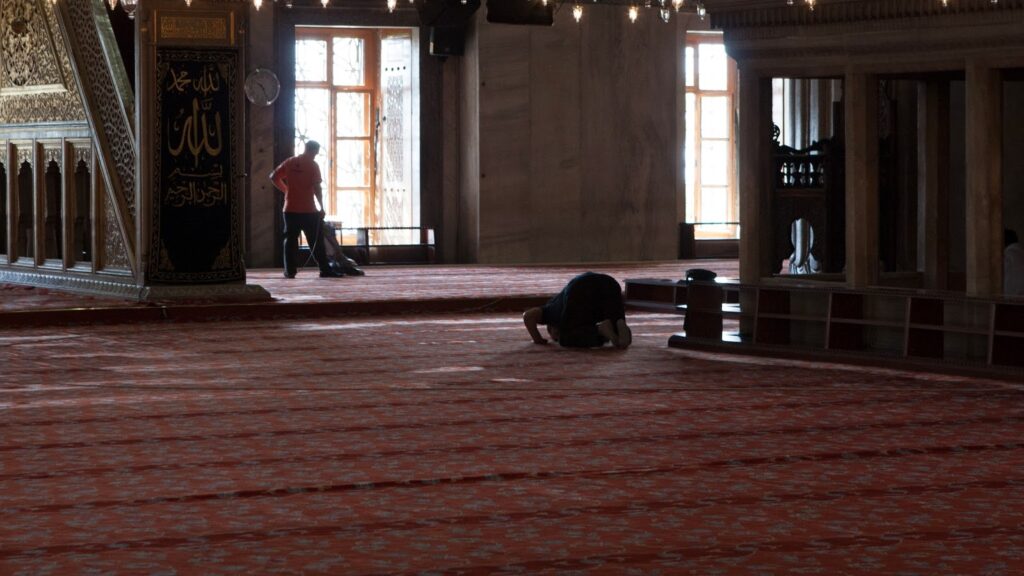
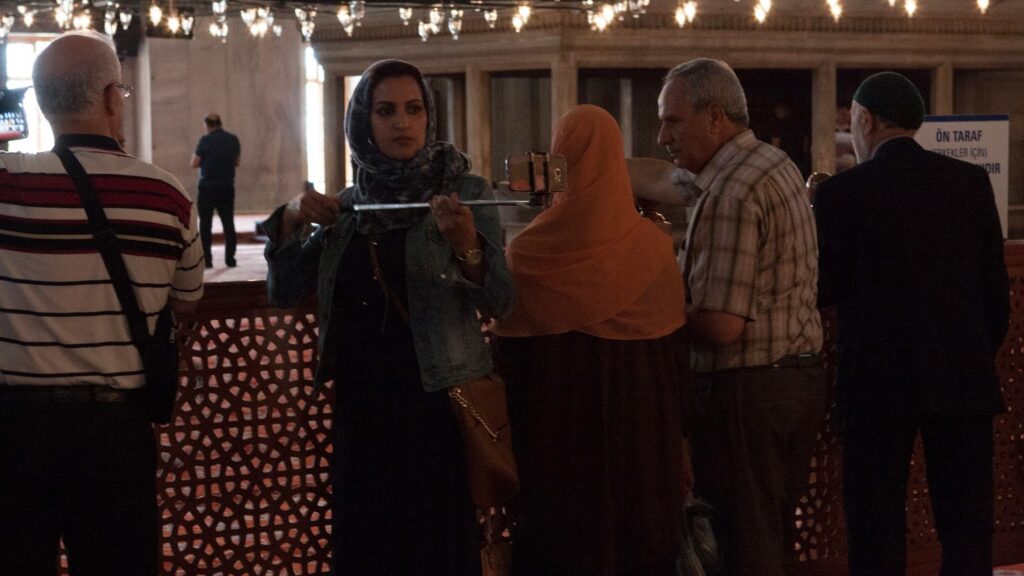
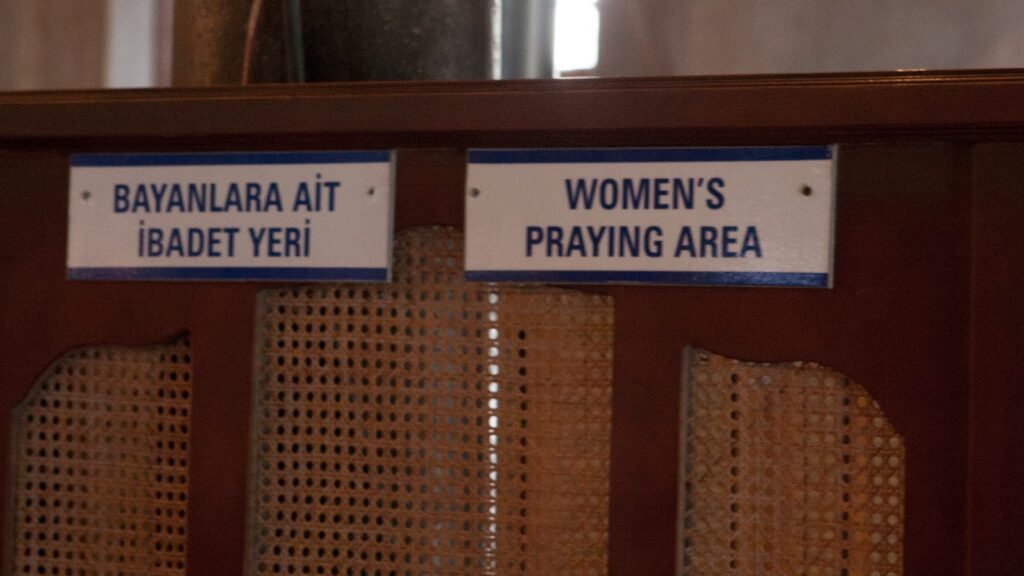
We wouldn’t want the men and women to pray in the same area. Those naughty women might give men impure thoughts.
It’s free to enter the mosque but you do have to stay to the side. They ask for donations on the way out, we gave them a few TL.
The Hagia Sophia
If you’re on the promenade, you’ll see The Hagia Sophia right across from The Blue Mosque. Visiting it is a bit of a different experience. Think of it like traveling through an airport security in the US compared to most other countries. The Blue Mosque has someone at the entrance to check you, and tell you want is not allowed, but for the most part they are more relaxed about it. The Hagia Sophia makes you wait in line, then you go to pay a fee to get in. There are multiple prices for the entrance fee and it’s unclear how they differ. When you ask the person behind the window, they couldn’t care less about your question or helping you, but will take your money, anyway. From there, you go through a metal detector and security check before finally being allowed in.
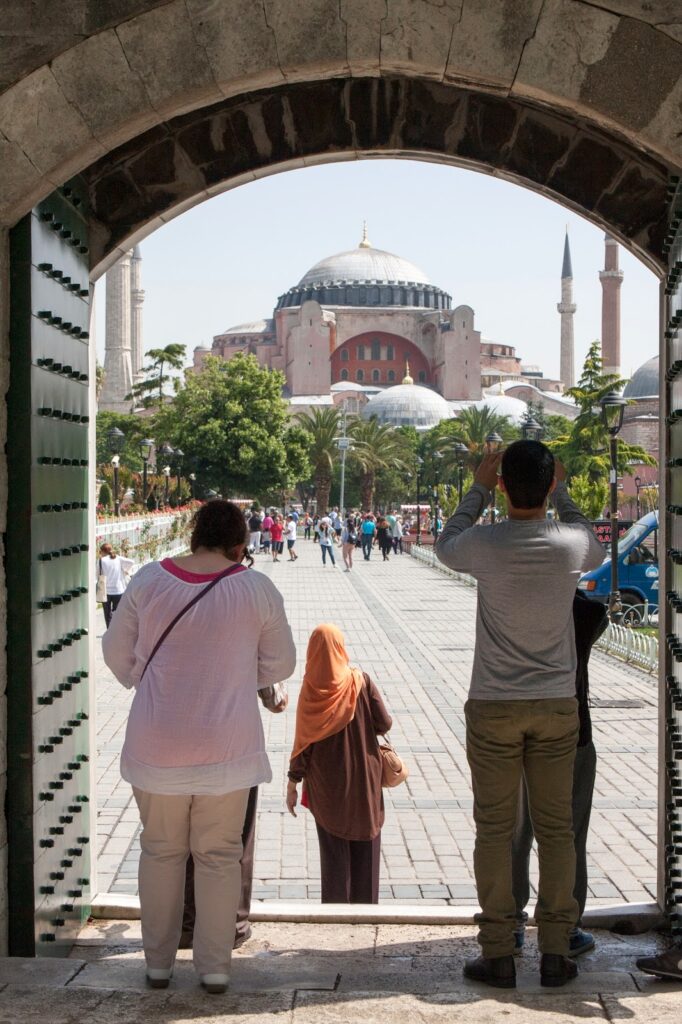
Once a church, later a mosque, and now a museum, but still used as a church and of course a tourist destination. I guess the difference is you pay for a museum in Istanbul but not a mosque or church.
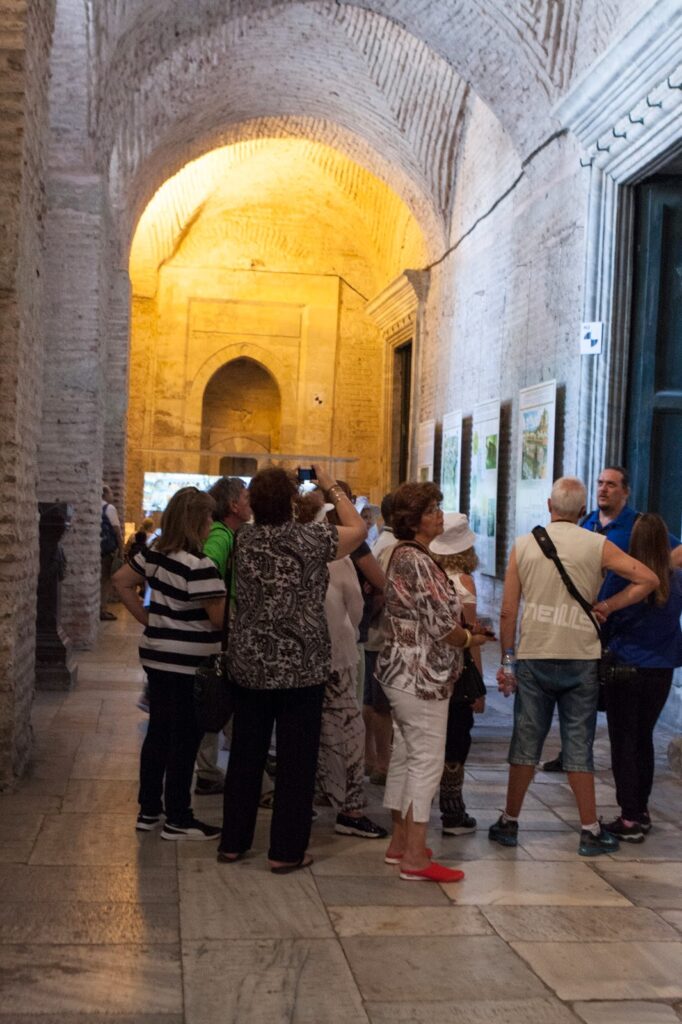
The church/Museum goes back to the Byzantium and Ottoman Empire and is considered the epitome of Byzantine architecture.

If you have looked through these images and are thinking to yourself, ‘WTF these pictures suck.’ The reason is, I did it on purpose to show the issue of traveling in a world with such a large population. And that we can’t see sites anymore without having to deal with massive crowds. This is the reality of travel versus the idealized version of travel that we get in the heavily curated images that most people post. And yes, I get the hypocrisy of being one of the people in the massive crown standing around taking pictures.

